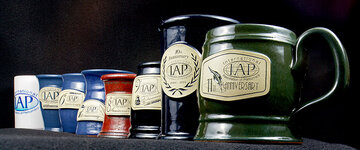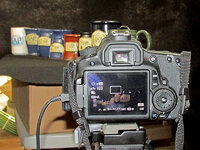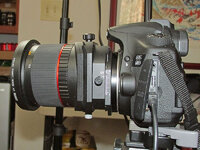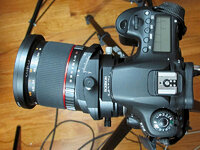Well done! You've found all the clues, so I'll go ahead and do the reveal.
My concept for this shot was "Mugs Through the Ages", so I wanted a photo that looked like a series of mugs stretching off into the distance - as if they were vanishing into the horizon. To achieve that sort of diminishing perspective, I had to position the camera very close to the mugs. I also wanted them to look big, like tall sculptures towering over the viewer. Therefore, I shot the picture from a low angle. The camera was nearly level with the base of the mugs.
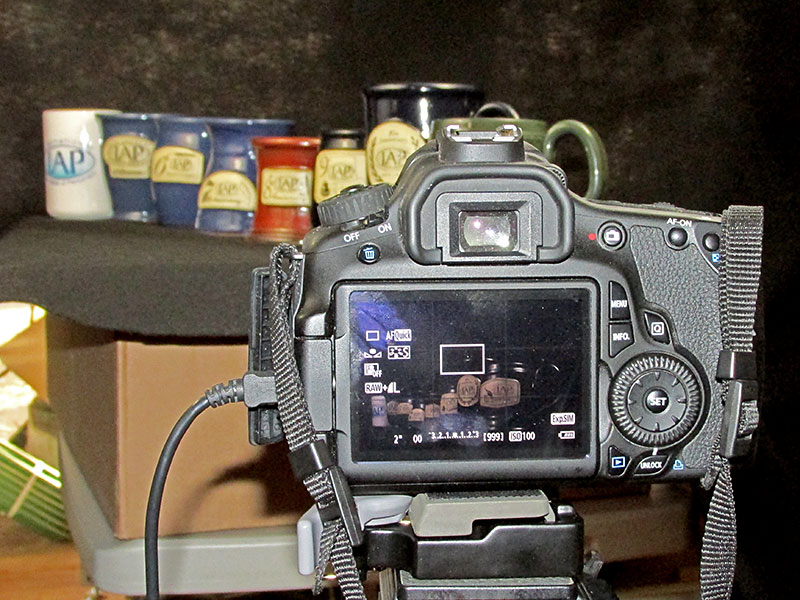
With a typical camera and lens, this would present two problems. One is depth-of-field. It would be difficult to get all the mugs in focus, and I really wanted to be able to read the writing on each mug. The other is vertical perspective. When you stand in front of and look up at a building, your mind edits the image, telling you that the walls are straight and that it is tall. When you take a picture of the same view, however, you see the converging lines of perspective. It looks skewed - as if the building was leaning away from you. I wanted the mugs to look tall, but straight.
You can overcome these issues via focus stacking and image manipulation, but a cleaner way is to use a tilt-shift lens. I have one that I picked up about a year ago on sale, and I decided it was the right lens for this job. I placed the camera level, and shifted the lens up.
This is how you get rid of the skewed vertical perspective. It is caused by "looking up". If you keep the film plane (to use an outdated term) parallel to the subject, then you'll get parallel vertical lines. Shifting the lens up moves the desired image (the mugs) down onto the camera's image sensor. Had I not done this, the mugs - especially the tall black one - would have looked like they were leaning away or to the right.
To keep all the mugs in focus, I tilted the lens to the right.
Normally, the plane of focus is parallel to the sensor. Tilting the lens, however, changes that. For this picture, I adjusted the plane of focus to match the angle of the mugs. The aperture I chose yielded a depth-of-field that encompasses a mug. Because the plane of focus is at an angle to the senor, the foreground is blurry in the lower left corner, but sharp in the lower right corner - despite the fact that they are equidistant to the camera.
I don't often use this lens, so I was delighted to have an opportunity to play with it. People often characterize them as "architectural" lenses, but tilt-shift lenses provide a lot of other creative options. They make interesting landscape lenses, or can be used to make seamless photo-stitched panoramas and high-res square shots. Tilting the lens opposite the subject angle produces an extremely short depth-of-field, tricking the eye into thinking it's looking at a miniature object (sometimes called the "toy effect"). And, every now and then, it comes in handy for a studio shot like this one.
I hope that was interesting,
Eric

